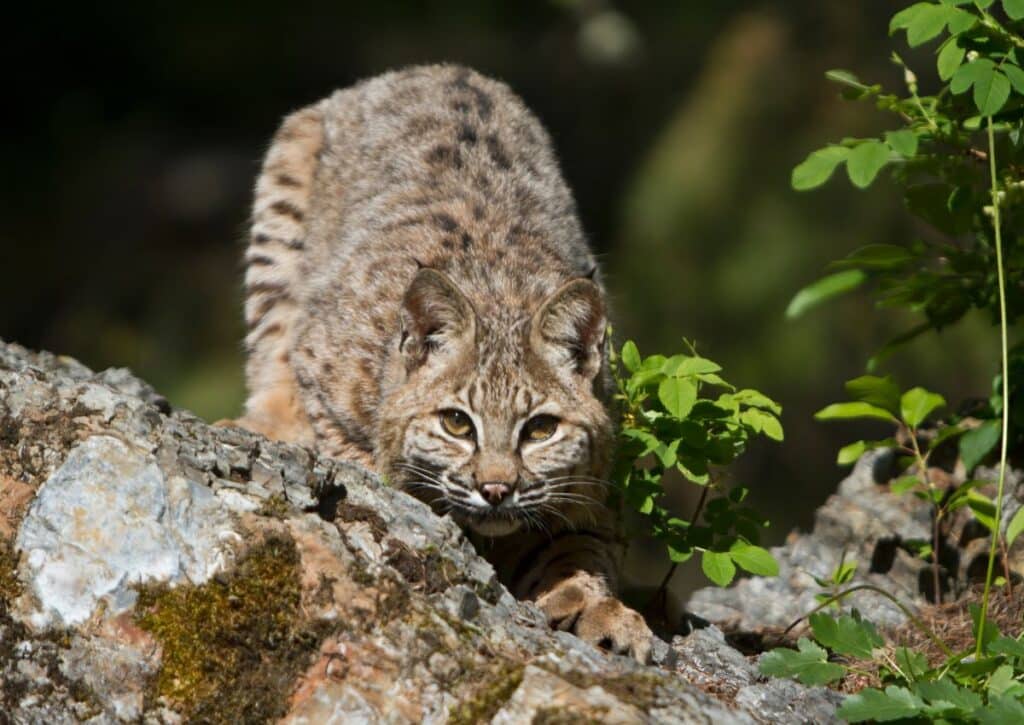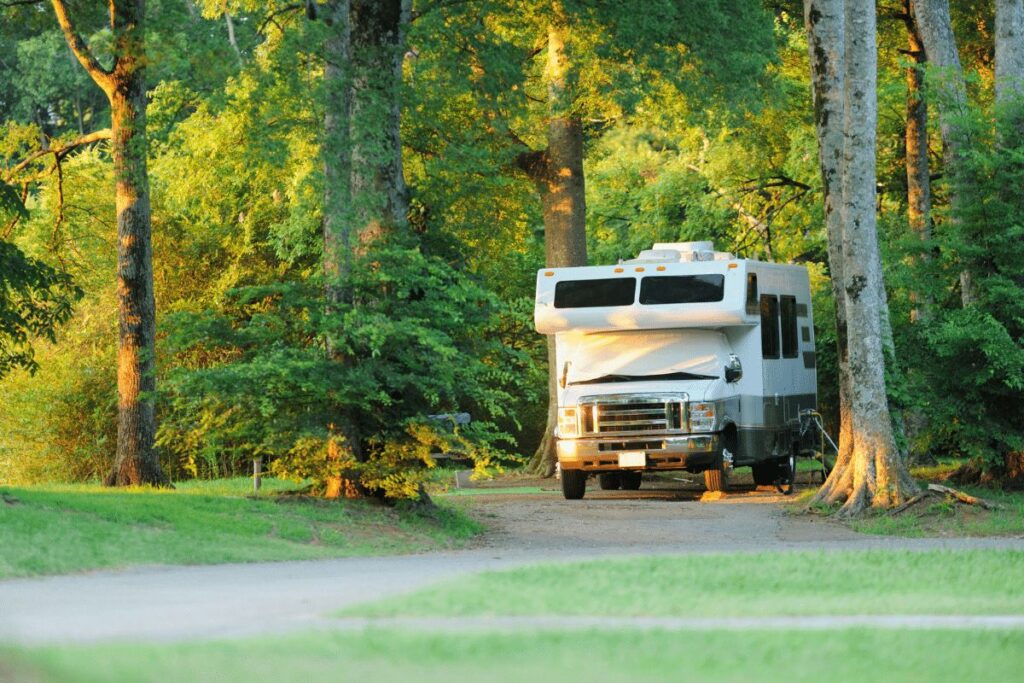Explore 12 animals in Angeles National Forest with us: photos & trail guides included!
Get ready for a wild ride through the Angeles National Forest where the trees whisper secrets of its inhabitants!
This isn’t just a walk in the park; it’s a front-row seat to nature’s hidden concert. We’re bringing you along on our trekking tales where the wildlife are the stars and the trails are the stage.
From the stealthy tread of the black bear to the high-flying antics of the northern flicker, we’ve spotted a full dozen of Mother Nature’s finest, and we’re excited to share every snapshot and footpath.
So, lace up your boots, we’re about to embark on an adventure where every turn brings a new natural neighbor into view!
Overview of The Angeles National Forest
The Angeles National Forest is a sprawling expanse of land that covers over 700,000 acres in the San Gabriel Mountains. It’s home to a variety of diverse ecosystems, including chaparral and sagebrush scrub, riparian woodlands, coniferous forests, and alpine tundra.
These habitats offer shelter and sustenance to many different species of animals, some of which we were lucky enough to spot on our hike.
We began our journey at the Chilao Visitor Center, where we were immediately greeted by a flock of American robins. As we continued down the trail, we had the opportunity to observe several other species of birds, such as hawks, kinglets, bluejays, and hummingbirds. We also saw plenty of squirrels and chipmunks scurrying about in the underbrush.
As we made our way higher up in elevation, our wildlife sightings became more impressive with each passing step. We spotted several mule deer peacefully grazing on grassy hillsides and even caught a glimpse of a coyote trotting through the forest. We also encountered a black bear roaming around near one of the campgrounds!
Further, along our journey, we observed more majestic creatures, such as a mountain lion, a bald eagle, and an elusive mountain goat. We also spotted some smaller animals like lizards, snakes, and even a tarantula!
Exploring The Angeles National Forest was an incredible experience that we’ll never forget.
Not only did we get to witness some of the amazing wildlife that calls this place home, but we also got to appreciate the breathtaking beauty of the San Gabriel Mountains. If you ever have the chance to visit this remarkable natural area, don’t hesitate to do it – you won’t regret it!
Black Bears
There are plenty of animals to see when hiking in the Angeles National Forest, but one of the most impressive is the black bear. These bears can weigh up to 600 pounds and stand up to six feet tall, making them a formidable sight in the wild.
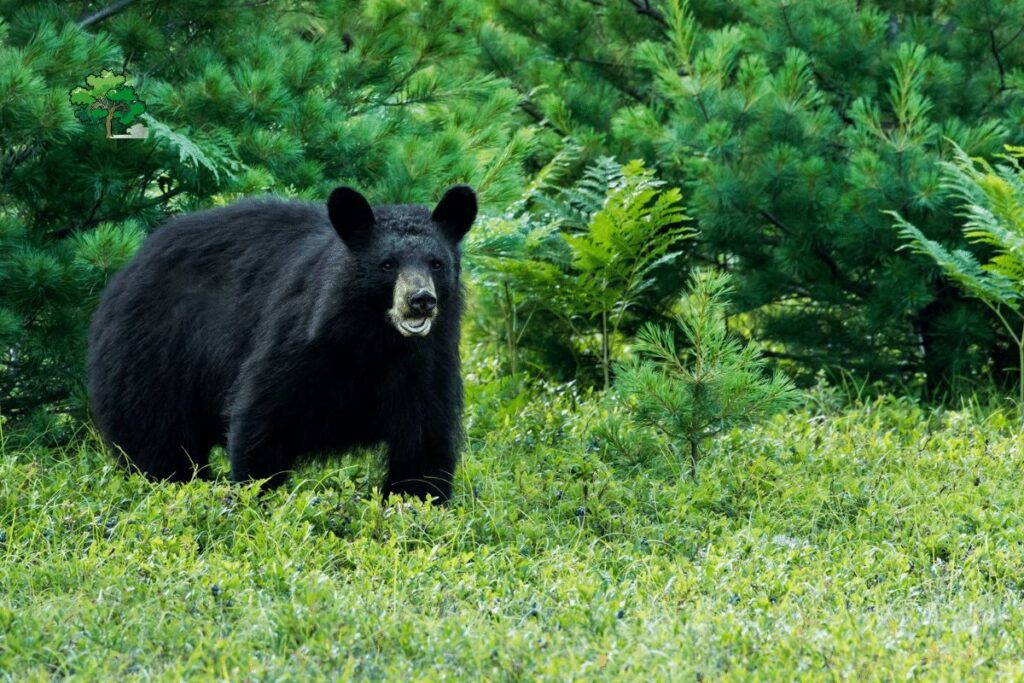
While they may look scary, black bears are actually shy and gentle by nature. However, they are still wild animals and should be treated with caution and respect.
If you do encounter a black bear while hiking in the Angeles National Forest, make sure to give it plenty of space and do not approach it.
Mountain Lions
Mountain lions are one of the most dangerous animals in the Angeles National Forest. They are large cats that can grow up to eight feet long and weigh over 200 pounds.
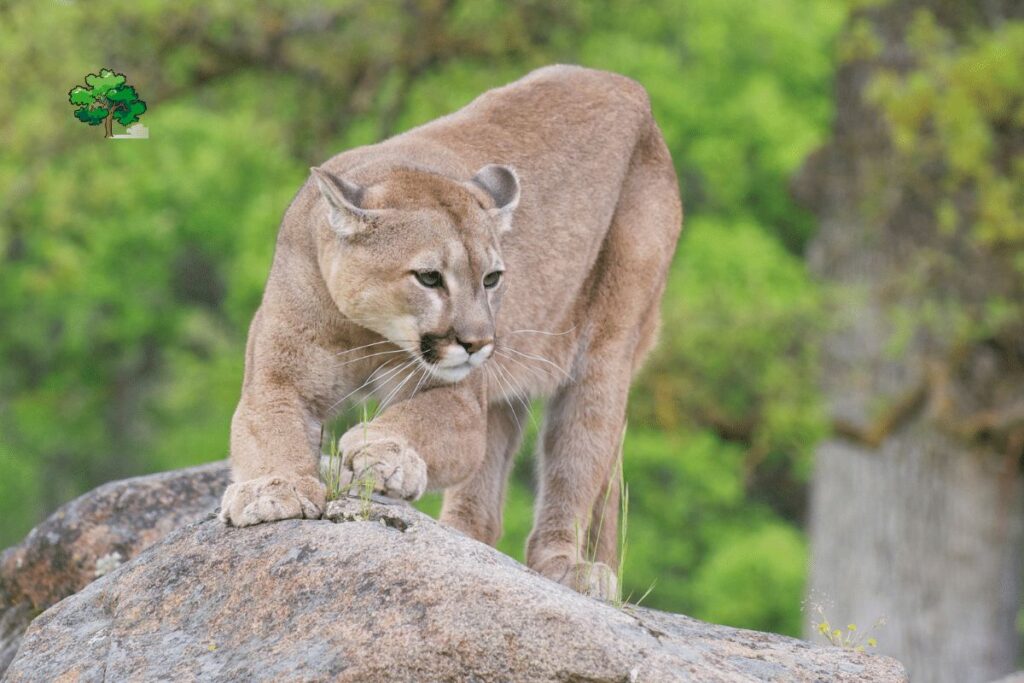
They are carnivores and their diet consists mostly of deer, but they will also eat smaller animals like rabbits and squirrels.
Mountain lions are solitary animals and they typically only come into contact with other mountain lions when they are mating.
Mountain lions are most active at dawn and dusk, but they can be active at any time of day or night. If you see a mountain lion, do not approach it. Give the animal plenty of space and do not turn your back on it or run away from it.
Skunks
A variety of animals call the Angeles National Forest home, but one of the most commonly seen is the skunk. While hiking through the forest, it’s not uncommon to spot a skunk scurrying about in search of food.
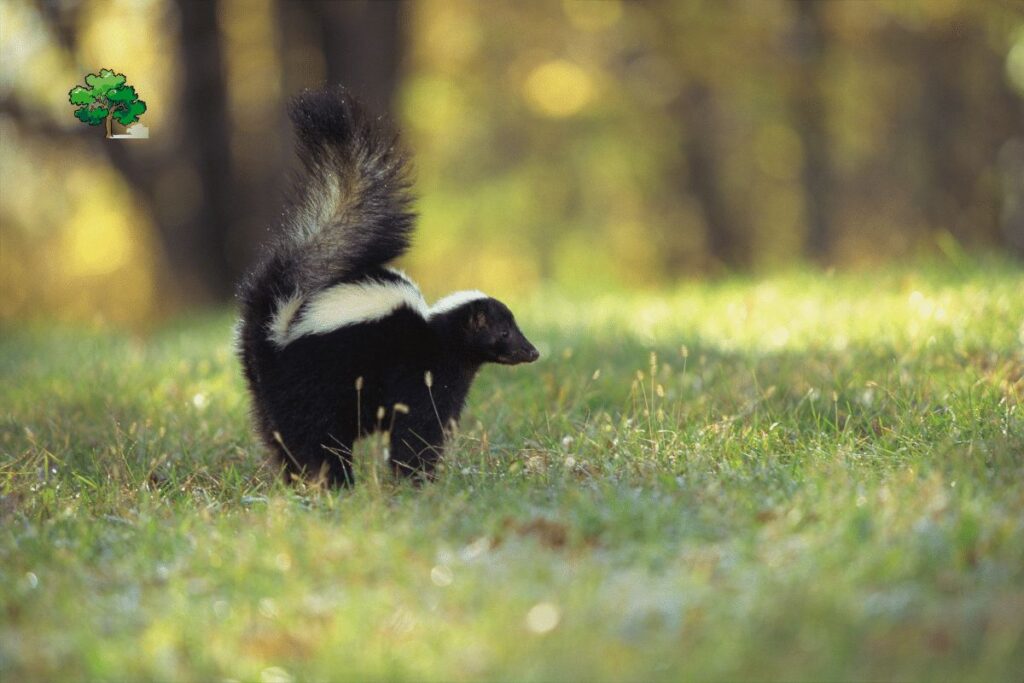
Although they may look cute, it’s important to remember that skunks are wild animals and should not be approached. If you do encounter a skunk, be sure to give it plenty of space and do not attempt to pet or feed it.
Bobcats
As we hiked through the Angeles National Forest, we were excited to spot some of the local wildlife. One of the first animals we saw was a bobcat! Bobcats are relatively common in this area, and they are often seen prowling around in the early morning or evening hours. We were lucky enough to see one during our hike and it was a beautiful sight.
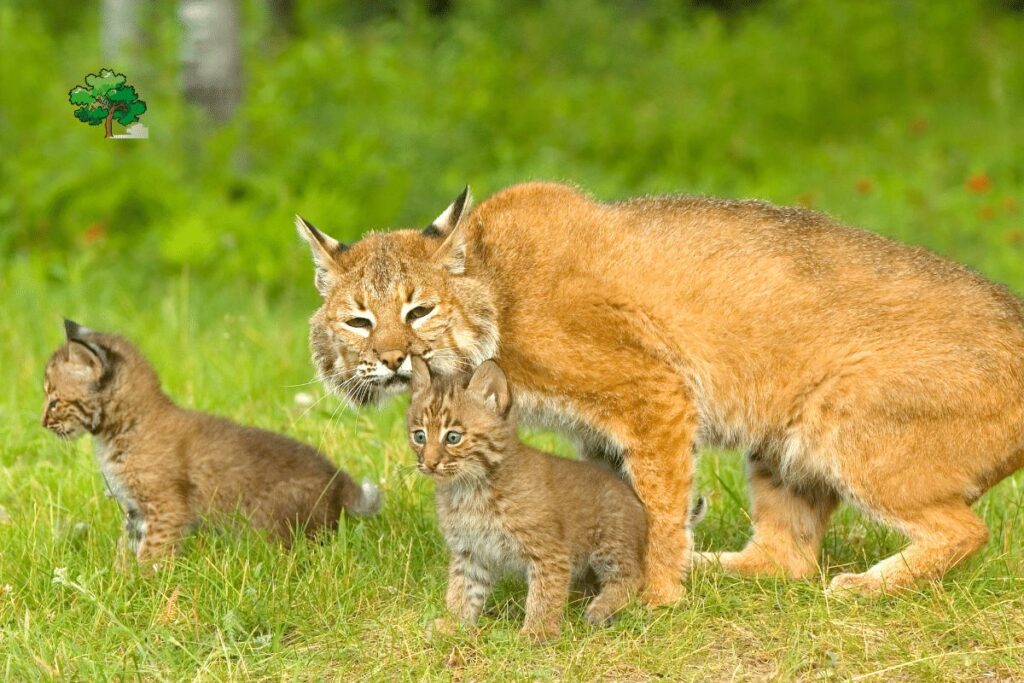
Bobcats are medium-sized cats with short fur that is usually brown or gray in color. They have black spots on their body and black-tipped tail. Bobcats are shy animals but they are also curious, so if you see one while hiking, be sure to give it plenty of space. These cats can be found all over North America, but they are most commonly found in the southwestern United States.
If you’re lucky enough to spot a bobcat while hiking in the Angeles National Forest, enjoy the experience! But remember to give these wild animals their space and don’t try to approach them.
Raccoons
If you’re hiking in The Angeles National Forest, you might be lucky enough to spot a raccoon or two. Raccoons are nocturnal animals, so you’re more likely to see them at night. However, if you’re quiet and patient, you might see one during the day.
Raccoons are interesting creatures. They have black masks on their faces and their tails are ringed with black bands. Raccoons are good climbers and swimmers. They’re also very curious animals, so if you see one while you’re hiking, it’s likely that it will be curious about you too!
Northern Flicker
As we hiked through the Angeles National Forest, we were delighted to see a Northern Flicker foraging on the ground! This beautiful bird has a crimson breast and yellow underparts, making it easy to spot among the trees. We watched as it pecked at the ground for insects, then flew up to perch on a branch and survey its surroundings. It was a real treat to see such a colorful bird in its natural habitat!
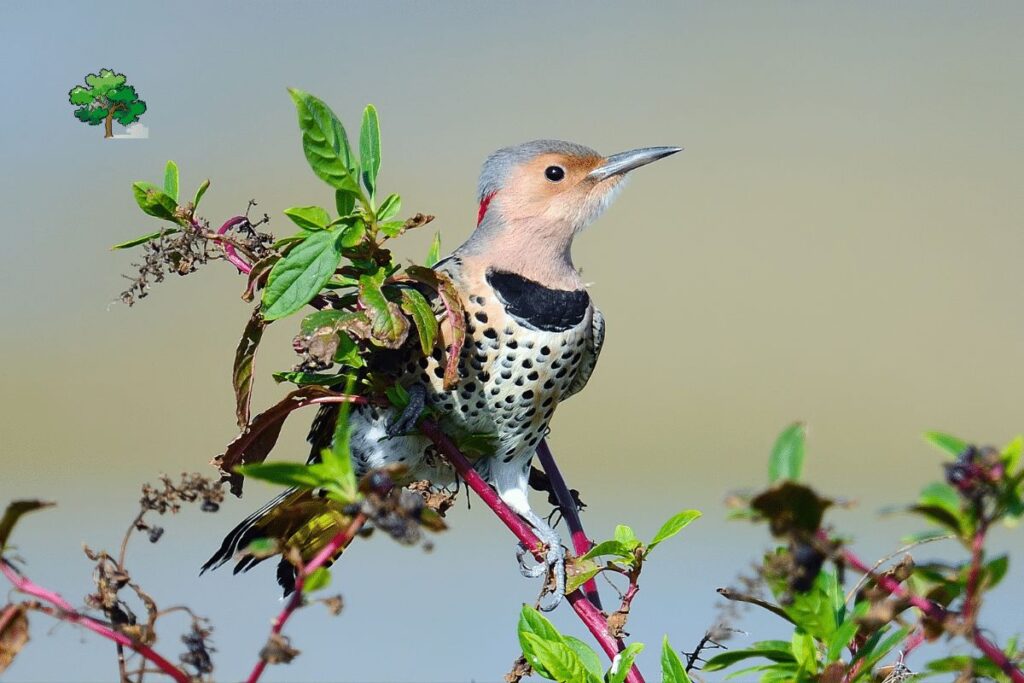
We were fortunate enough to watch the Northern Flicker for a few minutes before it flew away. It’s always exciting to spot wildlife in nature, and this was a wonderful opportunity to see a beautiful bird in its natural home.
Bighorn Sheep
Bighorn sheep are one of the many animals that you may see while hiking in the Angeles National Forest. These sure-footed animals are often seen on steep, rocky slopes where they climb with ease in search of food. Bighorn sheep are herbivores and their diet consists mainly of grasses, herbs, and shrubs.
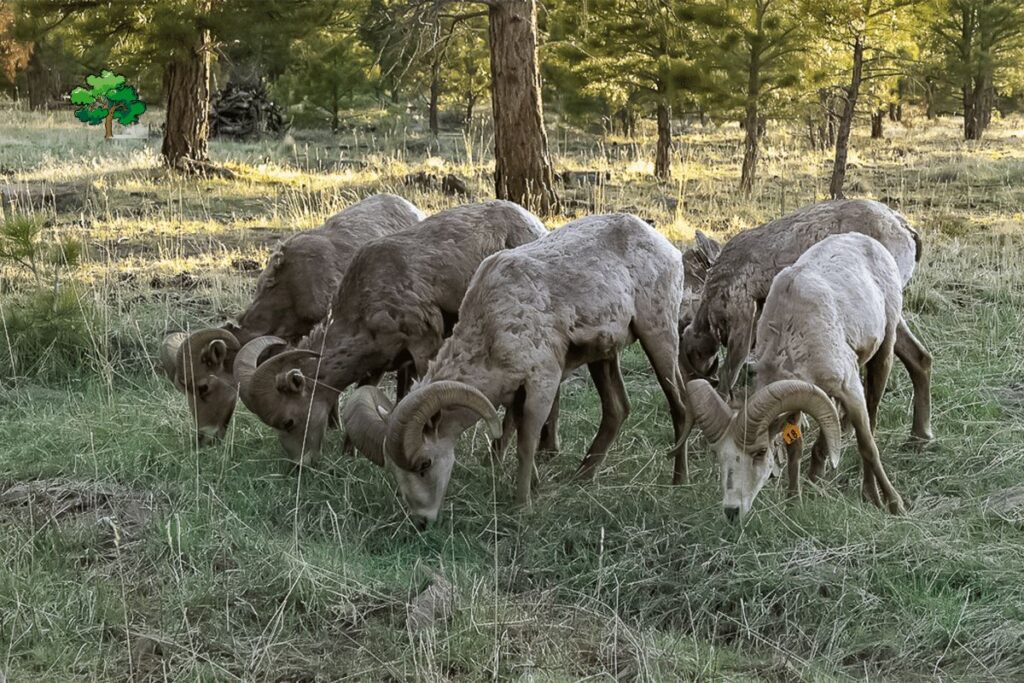
While we were hiking in the Angeles National Forest, we were fortunate enough to see a few bighorn sheep. It was really cool to watch them cautiously make their way down the rocky terrain. If you’re lucky enough to see a bighorn sheep while hiking in the Angeles National Forest, be sure to give them plenty of space and admire them from afar.
Mule Deer
Mule deer are a common sight in the Angeles National Forest, and we were lucky enough to see several on our hike. They are shy creatures, but if you’re patient and keep your distance, you may be rewarded with a glimpse of these beautiful animals.
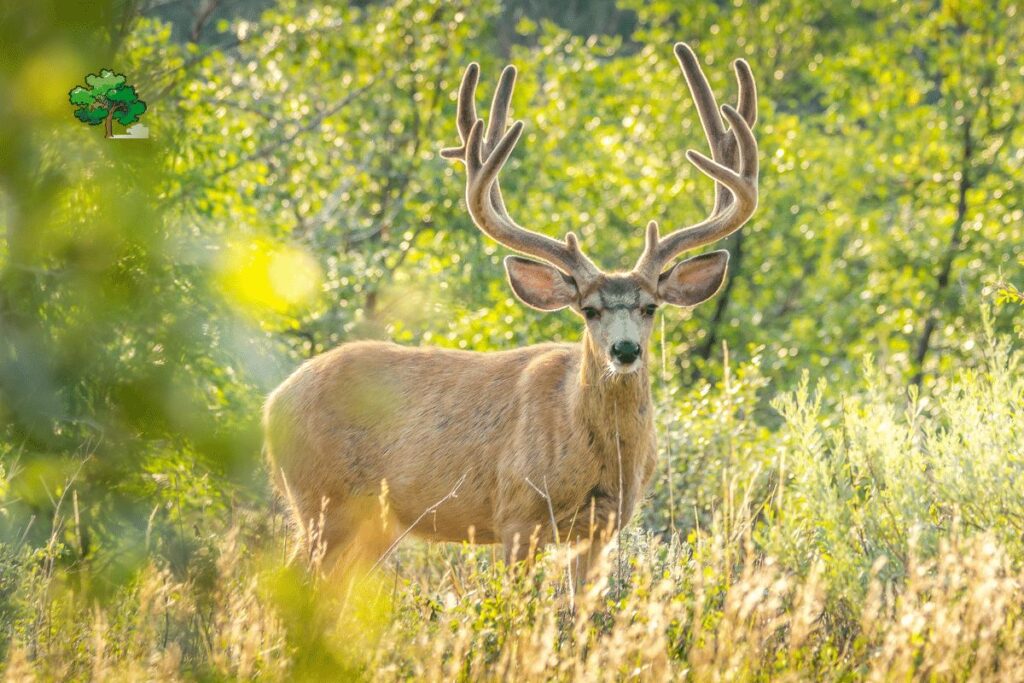
Mule deer get their name from their large ears, which resemble those of a mule. They are reddish-brown in color and have white spots on their backs and sides. Males (bucks) grow antlers each year, which they use to spar with other bucks for dominance. Females (does) do not grow antlers.
Mule deer are herbivores and prefer to eat grasses and forbs. In the Angeles National Forest, they also browse manzanita and other shrubs. During the winter months, when food is scarce, they will eat acorns and twigs.
Mule deer are generally solitary animals but can be seen in small groups during the mating season or when there is an abundance of food. If you’re lucky enough to see a mule deer while hiking in the Angeles National Forest, take care not to disturb them or their habitat. Enjoy your encounter from a distance, and be sure to share your photos with us!
Gophers
Gophers are a common sight in The Angeles National Forest, and they’re not shy about coming up to hikers for a treat. We saw several gophers during our hike, and they were more than happy to pose for photos.
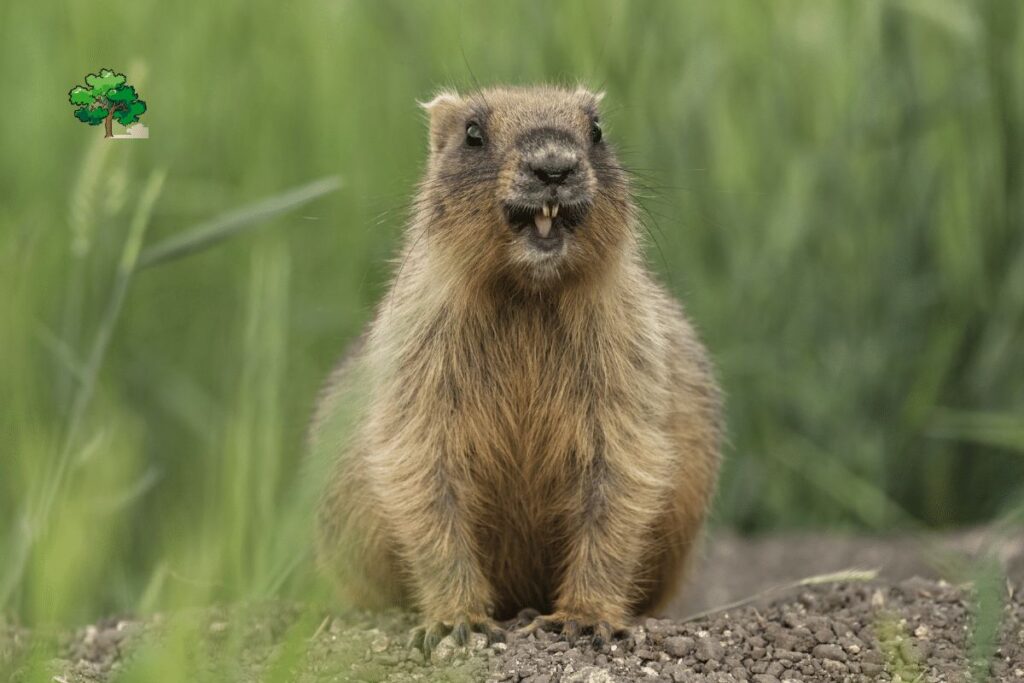
Gophers are small rodent-like animals that are native to North America. They’re related to groundhogs, and they’re known for their burrowing habits. Gophers typically live in underground burrows, but they can also be found in trees and other above-ground habitats.
Gophers are generally harmless animals, but they can be a nuisance if they damage your property. If you see a gopher on your property, it’s best to leave it alone and let it go about its business.
Opossums
One of the animals we saw while hiking in The Angeles National Forest was an opossum. Opossums are marsupials, meaning they have a pouch in which they carry their young. They are nocturnal animals, so we were lucky to see one during our hike.
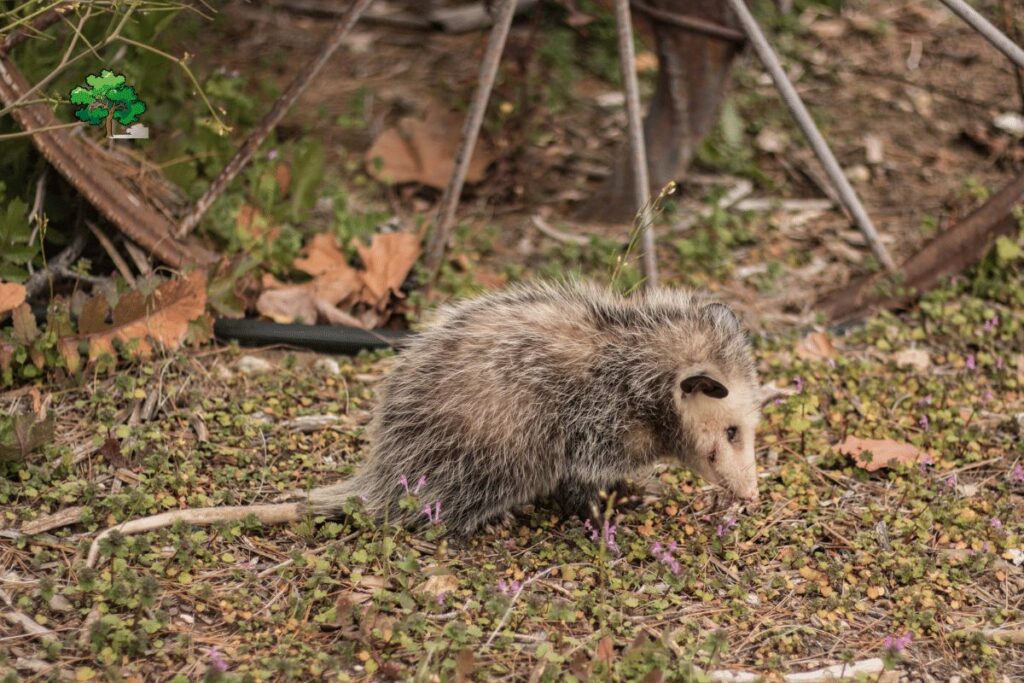
Opossums are not aggressive and will usually try to avoid confrontation, but if they feel threatened they will hiss and show their teeth. If that doesn’t deter their attacker, they will play dead (hence the phrase “playing possum”).
This is not true hibernation, but an involuntary response triggered by fear. The opossum’s body temperature and heartbeat will drop and it will release foul-smelling fluids from its anal glands. It may even drool or defecate on itself to complete the illusion!
While opossums may seem like strange creatures, they play an important role in the ecosystem. They are scavengers and help to clean up carcasses and other rotting material. They also eat harmful insects, including ticks that can carry Lyme disease. So if you see an opossum on your next hike, don’t be afraid – give it a wide berth and enjoy watching this interesting animal!
Jackrabbits
While hiking through The Angeles National Forest, we saw many different types of animals. One of the most common animals we saw was jackrabbits. Jackrabbits are a type of hare that is native to North America. They are known for their long ears and powerful hind legs.
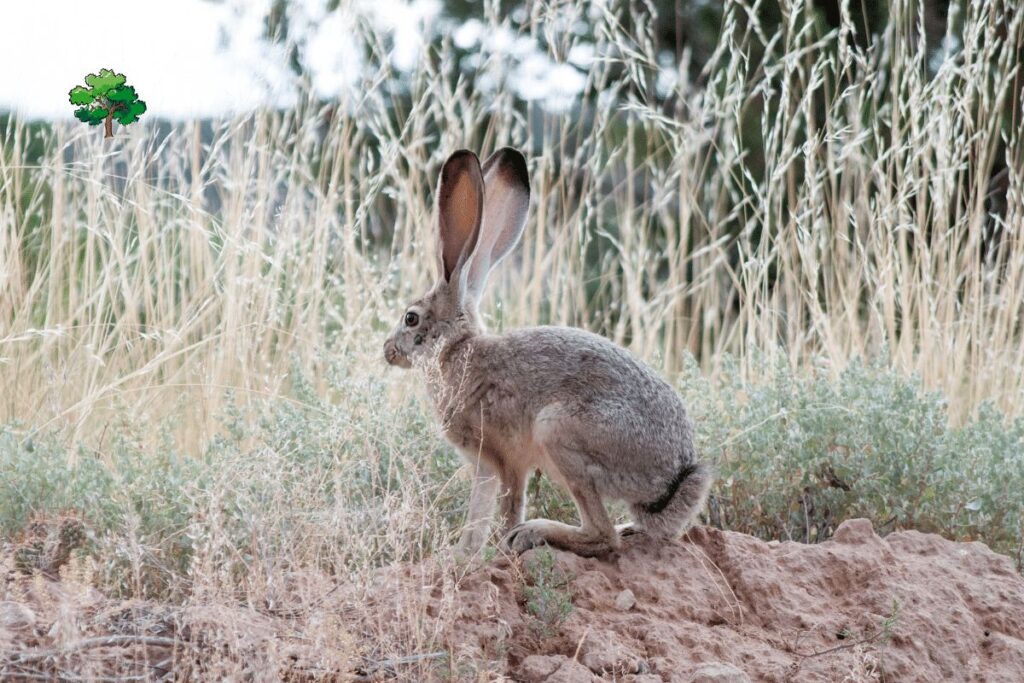
We saw several jackrabbits while we were hiking and they were always a welcome sight. They are such cute little creatures and it was exciting to see them in their natural habitat. We even got to see a mother jackrabbit with her babies which was an amazing experience.
If you’re ever hiking in The Angeles National Forest, keep your eyes peeled for jackrabbits! They are just one of the many wonderful animals that call this place home.
Greater Roadrunner
The first animal we saw on our hike was the Greater Roadrunner. This bird is native to North America and is often found in the southwestern United States. It was running across the road in front of us and then stopped to look at us before continuing on its way.
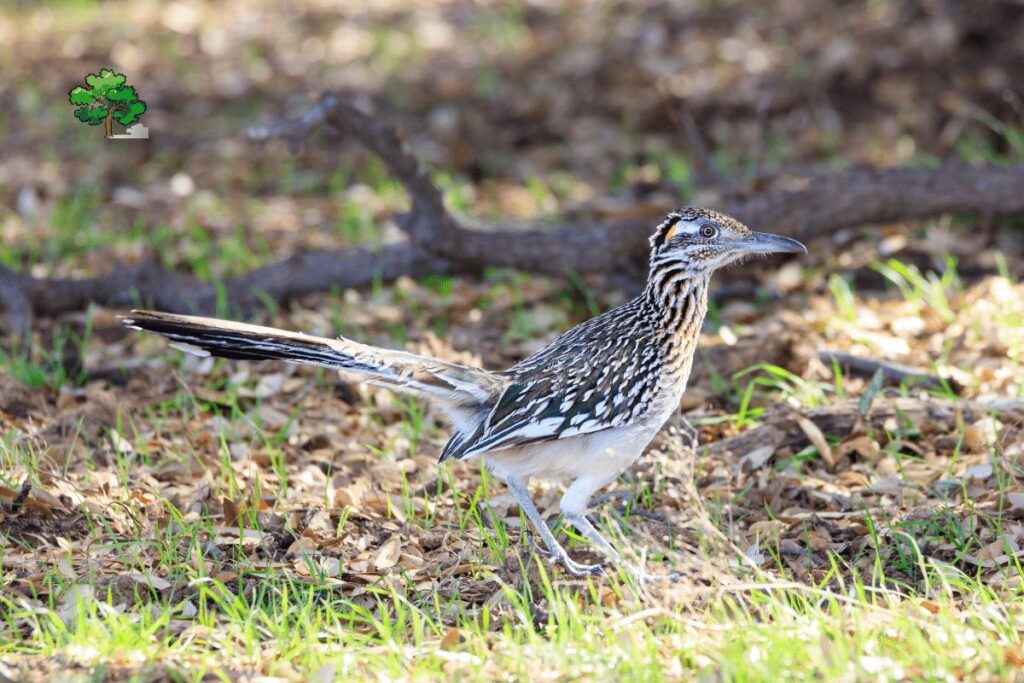
This bird is known for its long legs and tail, which it uses to run down its prey. It can also fly, but only for short distances. The Greater Roadrunner is a carnivore and its diet consists mostly of lizards, snakes, insects, and small mammals.
We were lucky enough to see this bird up close and it was definitely an exciting start to our hike!
Wildlife Trails in Angeles National Forest
Angeles National Forest unveiled to us the wonders that our environment holds. As we traversed its trails, we didn’t just encounter scenic beauty but a lively wildlife community that felt like a gift with every sighting.
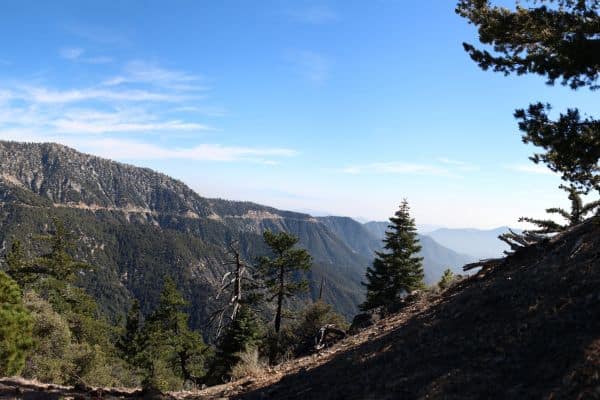
Let’s revisit some of the best trails and the animals we were fortunate to meet.
1. Mt. Wilson Trail (14 miles round trip; Mira Monte Ave, Sierra Madre)
On this trail, our ears were often enchanted by the echoing call of the Mountain Quail. Their topknot feathers and enigmatic presence felt like we were uncovering forested secrets with every step.
2. Bridge to Nowhere Trail (10 miles round trip; Camp Bonita Rd, La Verne)
Beyond the famed bridge, near the water, we frequently spotted the vivid California Newt. Their vibrant orange underbellies were like little beacons, brightening our path.
3. Devil’s Punchbowl Loop Trail (1 mile round trip; Devil’s Punchbowl Rd, Pearblossom)
Though brief, this trail was memorable. Among the jagged rock formations, we marveled at the Bighorn Sheep, displaying their impeccable skill at navigating the treacherous terrain.
4. Pacific Crest Trail through Angeles (Section length varies; Multiple access points)
While on the renowned PCT, we were often amused by the sprightly Western Gray Squirrel. Their agile antics made our journey all the more delightful.
5. Strawberry Peak Trail (7 miles round trip; Red Box Rd, San Gabriel Mountains)
On this trail, we were fortunate enough to spot the stealthy Bobcat. Their silent grace was a marvel, a moment that remains etched in our memories.
6. Switzer Falls Trail (4.5 miles round trip; Angeles Crest Hwy, Tujunga)
By the cascading waters, we came across the Coastal Range Newt more than once. Their affinity for the moisture-rich environment made the falls seem even more magical.
7. Baden-Powell Trail (8 miles round trip; Angeles Crest Hwy, Vincent Gap)
Above, the skies often showcased the swift Peregrine Falcon. Their speed and grace left us in awe, a testament to nature’s wonders.
8. Cucamonga Wilderness Trails (Length varies; Multiple trailheads including Icehouse Canyon)
Here, we treaded with caution, for we once chanced upon the Black Bear. The encounter was a humbling reminder of the forest’s wild essence.
9. Fish Canyon Falls Trail (5 miles round trip; Van Tassel Fire Rd, Duarte)
The melodic chorus of the Pacific Tree Frog often accompanied our journey. Their songs, echoing through the canyon, felt like nature’s own soundtrack.
10. Josephine Peak Trail (8 miles round trip; Angeles Forest Hwy, Clear Creek)
It was here that the vibrant California Mountain Kingsnake caught our eye. Their distinct bands were a colorful surprise on our trek.
11. Condor Peak Trail (15 miles round trip; Big Tujunga Canyon Rd, Sunland-Tujunga)
The vast sky often showcased the majestic California Condor. Their immense wingspan and graceful flight were sights we still fondly recall.
12. Silver Moccasin Trail (53 miles point-to-point; Chantry Flat Recreation Area, Arcadia)
The gentle Mule Deer graced our mornings here. Their peaceful demeanor added a touch of serenity to our hikes.
Looking back, our adventures in the Angeles National Forest were rich with discoveries and memories. Those trails, and the wildlife we encountered, reminded us of the intricate web of life that we were privileged to witness. Every step was a reminder of the bond we share with our natural surroundings.
Conclusion
Exploring the Angeles National Forest was an incredible experience for us and we were thrilled to have been able to see so many animals on our hike. From small lizards scurrying across the path, to majestic eagles soaring high above us, it was truly awe-inspiring.
We hope that this article has provided you with some insight into just how diverse a wildlife sanctuary Los Angeles’s national forest is. Whether you are looking for a relaxing nature escape or an adventurous outdoor adventure, there is no better place than the Angeles National Forest!

